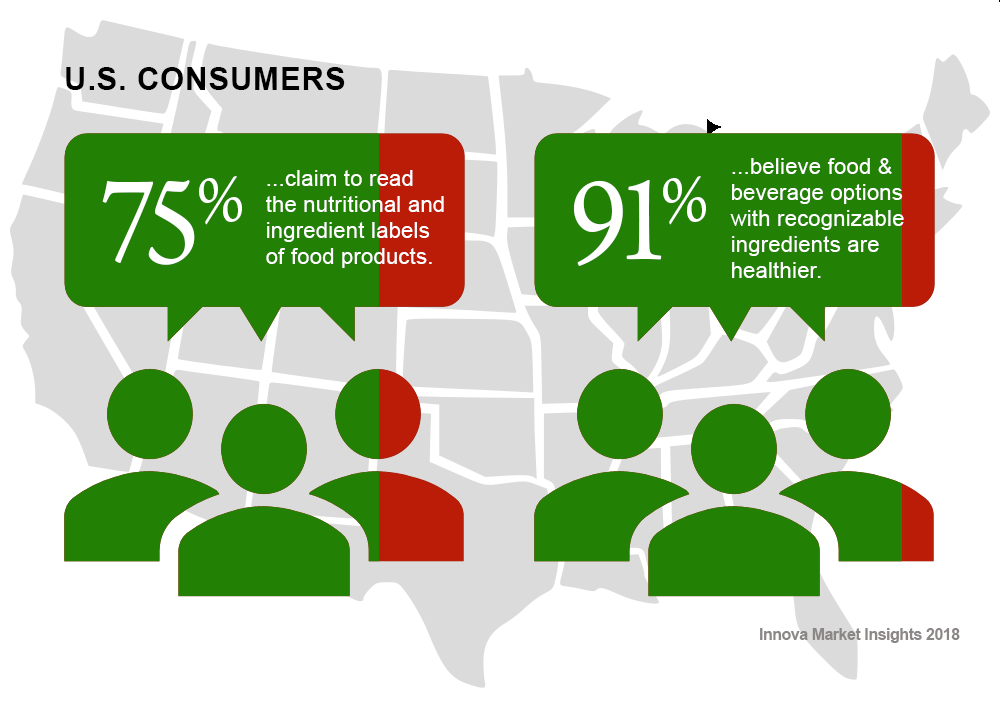
The business of better blends
Current research estimates that 91% of U.S. consumers believe that food and beverage options with recognizable ingredient lists are 'healthier’. As consumers become increasingly wary of complex and often confusing ingredient labeling, many in the dairy industry are beginning to take the clean label approach.
To deliver traditional products with cleaner ingredient lists, dairy processors must reformulate well-recognized processes to remove additives and synthetics, and introduce ingredients listed with familiar names and products that are minimally processed.
However, as these cleaner formulations move away from stabilising ingredients, developing new blends can be time-consuming and costly for smaller dairy manufacturers. Furthermore, without a deep understanding of how a new blend will work within a plant, manufacturers risk damaging expensive plant equipment.
The viscosity of dairy products is an important consideration for dairy manufacturers, greatly influencing product processability. Viscosity both affects the flow properties of food, as well as the appearance and consistency of a product. Understanding this variable provides dairy producers with a greater understanding of their product through key stages, including manufacture, processing, and storage.

While traditional viscosity analysis provides producers with a single viscosity reading at a particular point in time, innovative technologies can now provide a fuller picture. These technologies can describe the functionality of the blend as a product goes through multiple cooking, holding and cooling cycles. This can dramatically shorten product development time and provide producers with greater confidence in the performance of their new formulations.
Magnifying micronutrients
Dairy products are a staple item in many diets, delivering first-rate nutrition in a creative and delicious variety of styles, flavors, textures and packaging.
Fortification, the addition of micronutrients to foods, is growing in popularity as a method to meet the increasing demands on dairy products. Within the dairy industry, common fortification candidates include enriched dairy-based beverages, cheese, yogurt and even ice cream.
The current popularity of fortification is due to its ability to provide consumers with a low-cost and effective method to increase their dietary nutrients - particularly those in populations that lack access to sufficient amounts of essential nutrients.
To create these products, food manufacturers blend a dairy base, such as milk, with functional ingredients, such as vitamins and minerals. Examples of fortification ingredients include:
- Vitamins - Though not required by law, milk sold in the US is often fortified by vitamin A and D. Vitamin A palmitate and vitamin D3 are often added as they are the most active and absorbable forms of these nutrients.
- Minerals - Milk can be fortified with minerals, such as zinc, iron, and folic acid. These minerals are essential constituents of body fluids and tissues.
However, fortifying dairy beverages can often lead to a significant change in a product’s functional properties. For example, fortifying a milk drink with soluble calcium presents a significant challenge, as calcium can interact with protein and coagulate, resulting in a thick layer of sedimentation.

To ensure high-quality dairy foods, it is important that manufacturers leverage detailed functional testing methods. This enables deeper insight into the functionality of blends with novel ingredients.
No fat, low fat, less fat, whole fat
Dairy fat has long been viewed as one of the most controversial components of dairy. Since the 1960’s, there has been a sizeable rise in low-fat dairy products. In fact, in 1985, the United States Department of Agriculture (USDA) recommended a switch to low-fat dairy products as an approach to controlling fat intake for everyone over the age of 2 years. Globally, new limits and regulations have led to an even greater pressure on the dairy industry to produce low-fat dairy products.
However, many consumers view low-fat products as potentially lacking flavor, forcing the dairy industry to rethink its approach to manufacturing flavorful low-fat and reduced-fat options. To do this, manufacturers need new tools and technologies to better understand the texture of these products.
Fat content has a significant effect on a dairy product’s rheology and, as such, it’s functionality and texture. Products with high fat concentration often behave differently to products with reduced fat. For example, reduced fat cheese often develops a firm texture that does not break down during eating. This is in contrast to regular cheese, where soft, crumbly textures are often highly desired.
Advanced rheological analysis can be deployed to compare the viscosity of regular and reduced cheeses to determine the changes in mechanical properties. This provides producers with greater insights into their blends, allowing them to create healthy, nutritious and, most importantly, delicious dairy products.

Top quality
It’s important to understand how a product functions throughout a process - from first mixing in the initial batch to the’ taste, the mouthfeel, as well as how it's going to look on the store shelf. As consumer preferences continue to widen, dairy manufacturers must continue to utilize effective technologies to create innovative products.
By adopting the right technology and methods, companies in the dairy industry can secure their brand integrity and deliver a product that lives up to consumer expectations.
PerkinElmer is committed to providing the dairy industry with advanced technologies to control quality, and provide real-time intelligence to assist in product development, formulation, and optimization.
References:
- John Kearney, Philos Trans R Soc Lond B Biol Sci. 2010 Sep 27; 365(1554): 2793–2807. doi: 10.1098/rstb.2010.0149
- Hälsa - https://www.marketwatch.com/press-release/halsa-100-clean-label-movement-is-a-game-changer-in-us-food-market-2018-08-28 (Accessed 01-10-2019)
- Reynolds CJ, Buckley JD, Weinstein P, Boland J. Are the dietary guidelines for meat, fat, fruit and vegetable consumption appropriate for environmental sustainability? A review of the literature. Nutrients. 2014;6(6):2251–2265. Published 2014 Jun 12. doi:10.3390/nu6062251




